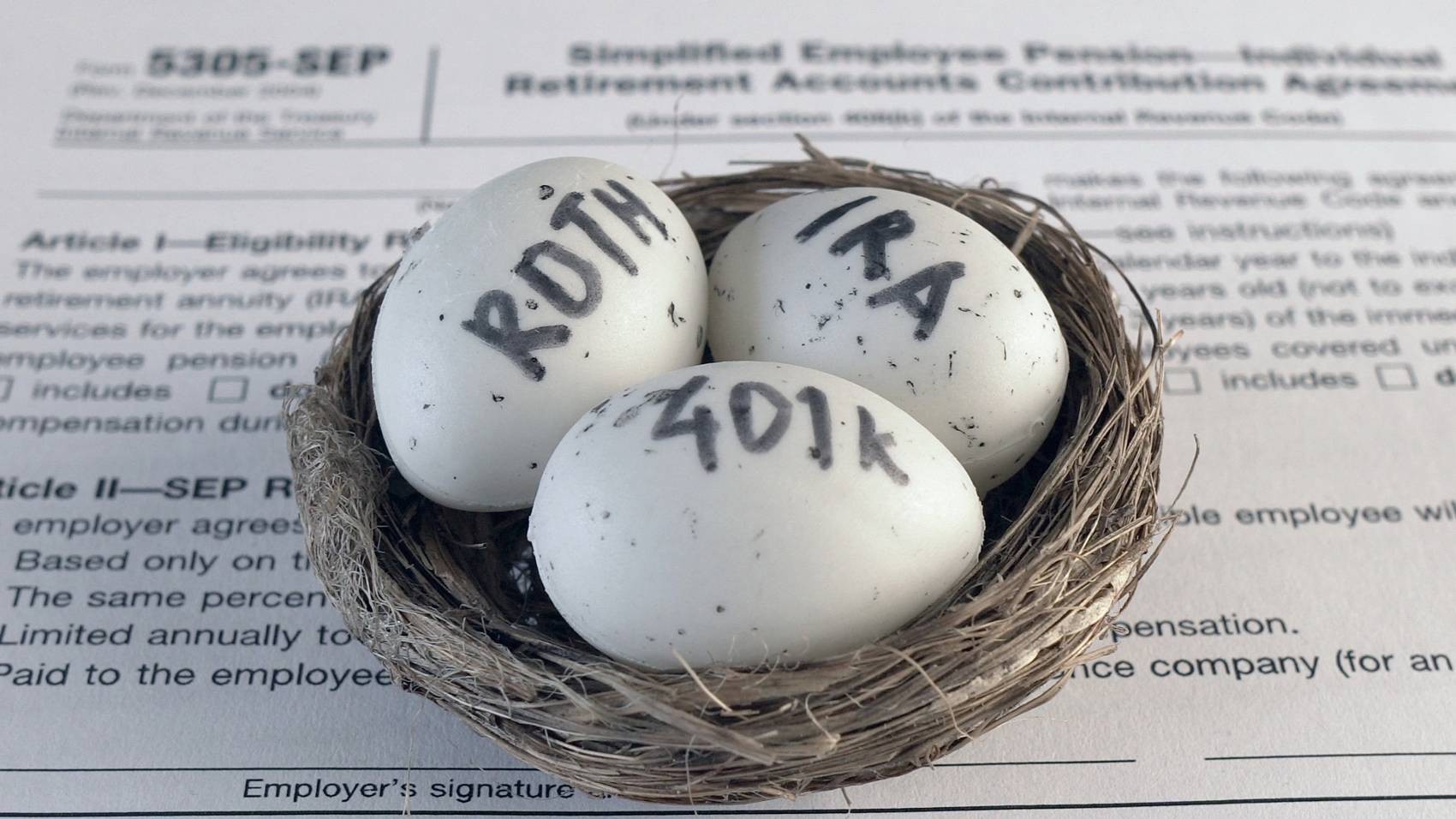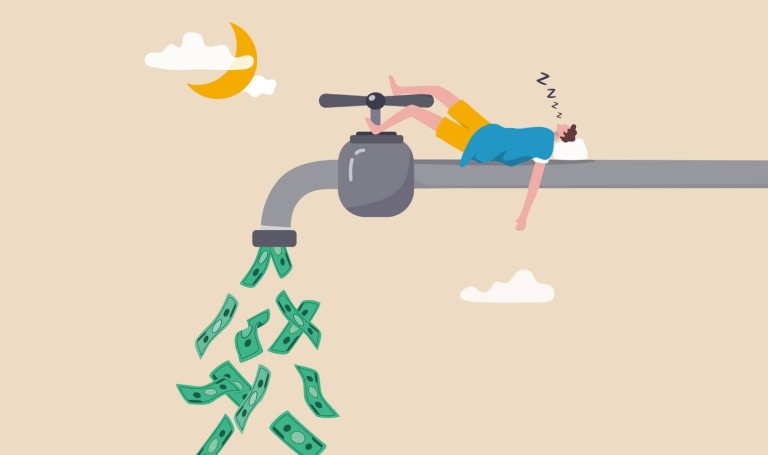Types of Retirement Accounts to Build Wealth
The idea of saving for retirement may startle you, however when you realize which type of retirement plan fits best with your objectives and monetary ambitions, it reduces worry and brings a sense of tranquility. Are you at a loss as to which retirement account is best suited for your needs? If so, you are far from alone during the crucial phase of planning out your post-career life.
Are you curious about the various retirement account types and how they could advantageously impact your future? This guide has all of the answers to help you make an informed decision. Planning for retirement becomes effortless when you have the right knowledge and set specific savings objectives. William Bevins CFP CTFA is trained to help you plan your retirement path.
What Are the Types of Retirement Accounts?
Whether you're just starting to plan for retirement or have been saving for years, there is a multitude of traditional and non-traditional retirement account options available. Individual retirement accounts like 401(k)s and IRAs may fall under the umbrella of traditional retirement plans, while non-traditional options include plans like Roth IRAs. As well as having a 401(k), many employers also provide employees with potential 403(b) retirement benefits. Determining whether a retirement account is traditional or non-traditional depends on when you are taxed for the funds.
401(k) Plan
A 401(k) is a retirement system that many employers provide to their staff, allowing them to withdraw pre-tax funds into the account. With a standard 401(k), you can contribute your pre-tax earnings towards this plan and begin preparing for retirement. By making pre-tax contributions, you can experience a decrease in your taxable income. The maximum allowable contribution to a 401(k) plan is an impressive $20,500. As an individual over the age of fifty, you can add $6,500 to your 401(k) account. In addition, there are numerous benefits associated with a 401(k), including:
- Employer match: Depending on the company, some employers offer a generous matching program for their employees. With your employer's contribution matching, you can increase the rate of growth for your money exponentially! This means that they will match whatever amount you contribute up to a certain percentage.
- Automated saving: Your 401(k) contribution will be automatically deducted from your paycheck each month. With the automated savings process, you can rest easy knowing that your monthly or biweekly contributions will never be forgotten.
- Tax-deferred growth: Your 401(k) funds will benefit from tax-deferred growth. Your employer may even permit you to make contributions to your 401(k) after taxes.
- High contribution limit: When compared to other retirement savings accounts such as IRAs, 401(k)s offer significantly higher contribution limits.
If your workplace offers a 401(k) and you're looking for an easy way to diligently save money for retirement, this plan is worth considering. Automate the process and watch as your savings steadily accumulate.
Before you add to your account, ensure that there are no costs attached. This can include an account maintenance fee or other fees associated with the account. Investing in a tax-deferred account can help your money grow, however when you begin taking out funds during retirement, taxes will be due. Moreover, due to your employer's carefully crafted retirement plan, you are restricted to selecting from among the available investment options.403(b) Plan
A 403(b) plan, or a tax-sheltered annuity, is the perfect way to start saving for your retirement. Employees of public schools and churches, and charitable organizations that are tax-exempt under Section 501(c)(3) all have access to a 403 (b), enabling them to save for retirement. A 403(b) plan is an excellent way to save for retirement, and both employees and employers can make contributions to this individualized account. Taking advantage of this opportunity will help you build a secure future.
Similar to a 401(k), the annual contribution limit for a 403(b) plan is $20,500. However, if you are 50 or older, you can add an extra $6,500 and maximize your contributions. Generally speaking, the maximum sum of money that can be contributed by both you and your employer together is usually no more than $66,000 or 100% of includable compensation - whichever amount is lower. 403(b) plans offer several noteworthy benefits, including:
- Matching contribution: Just like with a 401(k), your employer may offer the possibility of matching contributions if you are eligible.
- Tax-deferred growth: Until you decide to withdraw funds, all your earned returns and profits will remain tax-exempt.
- Lower fees: With fewer administrative fees, a 403(b) plan can be more advantageous than its 401(k) counterpart.
Unless you are age 59 1/2, withdrawing funds from your account will likely require a hefty tax fee. Nonetheless, certain scenarios warrant an exception, such as when disability or a qualifying medical expense is encountered. With a 403(b) account, your investment opportunities may be restrictive.
Traditional IRA
With a classic individual retirement account, you are the one who takes charge of its management. Selecting an individual retirement account (IRA) requires that you open the account and finance it on your own, as opposed to being associated with a company.
If you have access to other retirement plans through your job and make enough money, you could be eligible for a tax deduction on the funds that are put into a traditional IRA. Allow your balance to accrue tax-free while understanding your withdrawals will be subject to taxation. For those aged 50 and above, the current contribution limit stands at a generous $7,500; otherwise, the amount is set at $6,500. If your annual wage is lower than the stated limit, then that amount serves as your tax liability. Investing in a traditional IRA comes with numerous advantages, such as:
- No income limits: If you exceed the income limit to qualify for other retirement plans, traditional IRAs still offer a way to save. With no upper or lower limit on contributions, traditional IRAs offer a financial advantage to people of all ages and income levels.
- Tax-deferred growth: An additional financial advantage that you can reap in the long run is the tax-deferred growth of your money.
- Lower tax bill: If you qualify for tax-deductible contributions, consider using a traditional IRA to reduce your taxes.
- Rollover IRA from 401(k): If you have a 401(k) from an old job, rolling it into a traditional IRA is the perfect way to combine and manage your funds.
With a traditional IRA, there are certain boundaries to be aware of like the contribution limit and withdrawal timeframe before incurring a fee. If you take out funds before the age of 59 1/2, a 10% penalty will be applied. Depending on when you were born, withdrawals from your IRA must begin at either age 70 1/2 or 72. If you were born before July 1st, 1949, then the mandatory withdrawal age is 70 1/2; whereas those who are born after June 30th of 1949 have a slightly longer window, with their required retirement account disbursements beginning at age 72.
Roth IRA
A Roth IRA is also a viable retirement savings vehicle. As the single policyholder, this account is under your control - not that of your employer. Your Roth IRA contributions are made with post-tax dollars, meaning that you have already paid taxes on the money and will not receive a deduction for your contribution. When you reach retirement age, not only can you withdraw the money without having to pay taxes on it, but its value will have kept growing tax-free as well.
If you are over 50 years of age, the current contribution limit for your traditional IRA is a maximum of $7,500. However, if you make less than this amount in taxable yearly compensation, then your contribution limit will be equal to what you have earned that year. Investing in a Roth IRA offers numerous advantages, such as:- Grow Tax-free: While you won't be able to claim tax deductions on money contributed to a Roth IRA, your funds will appreciate without any taxes down the line.
- Tax-free withdrawals: Take advantage of greater worth in the future when you withdraw your funds without incurring any taxes.
- No RMDs: Unlike other retirement savings options, you can keep your funds with a Roth IRA for as long as you live.
- Contribution after age 70 1/2: Although other retirement plans have age restrictions, you can keep contributing to a Roth IRA even after your seventieth birthday and a half.
A Roth IRA is an ideal way to access your retirement savings tax-free! Withdrawing from a Roth account allows you to preserve more of your hard-earned money for the future. If you are in a low-income tax bracket and anticipate being in a higher tax bracket when you retire, you may also want to choose a Roth IRA. Not only is it possible to save for retirement with a plan from your job, but you can also take advantage of the benefits offered by investing in a Roth IRA.
If you withdraw funds from your retirement account before age 59 1/2, you will incur a penalty. It's possible that you may not qualify to contribute to a Roth IRA due to income limits.Simple IRA
You have the chance to set yourself up for success with a Savings Incentive Match Plan for Employees (SIMPLE) IRA sponsored by your employer. Start investing now and secure your future in no time! Without any effort on your part, your employer will contribute to this plan and there is no expectation for you to provide input or additional funds. Organizations with a workforce of less than 100 are eligible to offer SIMPLE IRAs. For individuals aged 50 and above, the maximum contribution limit is $19,000; otherwise, it's capped at $15,500. If you're considering a SIMPLE IRA, there are many benefits to be aware of—including:
- Tax-deferred growth: By opting to contribute to your SIMPLE IRA, you'll get the benefit of making pre-tax contributions and saving more money. By investing in tax-deferred funds, you can delay paying taxes until your retirement when making withdrawals. This allows for the growth of your financial assets without worrying about taxation early on.
- Bonus money: Regardless of whether you contribute your own money or not, your employer will still add 2% of your salary to a SIMPLE IRA on your behalf.
- Employer match: When you make contributions to your SIMPLE IRA, your employer has the potential to match up to 3%, so don't miss out on this amazing opportunity!
In comparison to a 401(k), the maximum contribution amount is lower and, if you choose to take out your funds before retirement, there will be a 25% penalty.
SEP IRA Plan
For self-employed individuals and small business owners, an SEP (Simplified Employee Pension) plan is one of the most beneficial and straightforward ways to save for retirement. This account can be created by any business owner, offering a convenient and secure way for them and their employees to access their information. During your retirement years, be mindful that taxes will be due on any withdrawals you make from your retirement fund. When setting up a SEP plan, the maximum contribution limit is calculated either through $66,000 or 25% of your earned income - whichever figure is lower. The advantages of these plans include:
- Increased contribution limit: Investing in a SEP plan offers more generous contribution limits than IRAs, so you can put away greater sums of money year after year for retirement.
- Lower taxable income: By making contributions to a SEP plan, you can reduce your taxable income and save money. As a small business owner, your contributions can be claimed as deductions on your taxes. Your investments in a SEP plan will enjoy tax-advantaged growth.
As an employee, if your employer offers a SEP plan, you can only benefit from the contributions they make. As a small business entrepreneur, if you are aiming to create a SEP (Simplified Employee Pension Plan), you must follow all the required procedures and abide by specific regulations. For a seamless and precise tax-filing experience, it is strongly recommended to enlist the help of an expert tax advisor.
Retirement Planning Steps
The ultimate goal of retirement planning is to ensure you have a secure future with financial freedom. Undoubtedly, this can be a difficult task for those with an aversion to taking risks to amass a secure financial foundation. To build the retirement of your dreams, make sure to follow these best practices and avoid any common missteps.
Start Early Saving for Retirement
Begin saving and strategizing for retirement today to ensure a secure future. The sooner you begin saving, the more your money will compound over time. When you invest early and remain committed to your investments, compound interest will work in your favor; the more money you have invested, the greater returns it brings.
If you wait to begin saving for retirement, the amount of money you'll need to set aside each month will be significantly higher to achieve your desired goal. If you are constrained in your contributions each month, procrastinating may mean that you do not hit your saving goals by retirement. Start saving now to secure a comfortable future!
Diversify Investments
By diversifying your investments, you can vastly reduce the chances of incurring large losses and build a substantial portfolio over time. While you can opt to invest in traditional stocks, bonds, ETFs, and mutual funds, why not also consider alternative investments such as real estate or precious metals? Investing in a variety of funds can offer several advantages, such as:
- Secure Your Investments.
- Stabilize your financial portfolio by mitigating the influence of market volatility.
- Achieve the financial security you desire in retirement with long-term savings!
- Maximize your returns with a diverse selection of investments.
- Streamline the process of tracking your investments and save precious hours over the long term.
- Leverage market fluctuations to optimize your investments by shuffling them strategically.
To ensure a well-rounded retirement portfolio, invest in various sectors to maximize your returns. By investing in various industries, you are hedging your bets and protecting yourself from any potential risk associated with having all of your funds invested solely in one area. Selecting a retirement plan with flexibility is advantageous, as it allows you to invest in both conventional and non-traditional assets without being confined by an employer's choices.
Consult a Financial Advisor
When planning for retirement, the most beneficial strategy is to become informed. Unless you specialize in financial planning, it can be difficult to find the time and resources needed to create a plan for your future wealth. If you're looking for retirement contribution plans best suited to your needs, consider hiring a financial advisor or planner who can make it easier for you.
A financial advisor can help you build a secure retirement portfolio by suggesting sound investment strategies and products. They will create personalized plans tailored to your needs, helping you work towards achieving long-term financial security. When you opt to employ a financial advisor, they will set up an appointment with you to discuss your economic objectives and evaluate your present monetary state. A fiduciary financial advisor can provide you with the expertise and guidance to set up investment accounts, as well as manage your investments for maximum returns.
Reach Out to Learn More
William Bevins Franklin TN CERTIFIED FINANCIAL PLANNER™ and wealth advisor. His practice focuses on writing financial plans, offering advice, and building suitable investment portfolios for individuals, small to medium-sized businesses, and family offices. He may be contacted by email at [email protected] or by phone at (615) 469-7348. Go to his website to learn more details.




